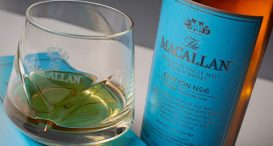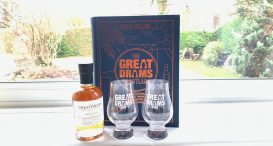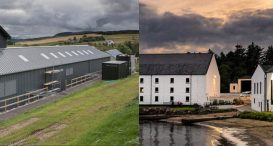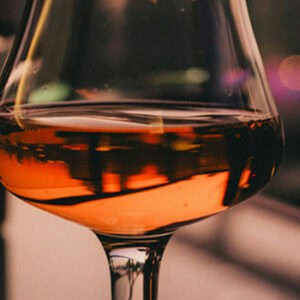The Great Drams ‘how to read a whisky label’ guide
let’s begin
There are thousands of whiskies on the open market, roughly a hundred distilleries in Scotland and around seventeen whisky producing nations around the world. But how the hell do you understand their labels? By using the Great Drams ‘how to read a whisky label’ guide of course.
Generally speaking there are eight details to note on any whisky label you come across:
- Distillery name (brand)
- Type of wood it has been aged in
- Age
- Region
- Type of whisky
- Strength, known as ABV (alcohol by volume)
- Bottle size
- Est. year
Along with these ‘standard’ details, be prepared to find the occasional addition such as:
- Collection (i.e. Glenfiddich’s Age of Discovery collection)
- Bottler (i.e. Douglas Laing & Co)
- Master Blender
- Master Distiller
- Cask number
- Non-chill filtered
- The words ‘Limited Edition’
Lots to take in, but what do they all mean? By the bottom of this list you will know exactly how to read a whisky label.
Distillery name (brand)
Simple one this; the distillery name is more often than not the brand name also. The exceptions here are if distilleries distill to sell on to blenders or bottlers who buy casks to finish or blend to create unique products released under their name.
Type of wood it has been aged / finished in
All whisky must be aged in Oak for a minimum of three years. Bourbon has to be aged in new casks whereas Scotch has to be aged in used casks so often you will see ‘Matured in a Sherry Butt’ or ‘Refill Bourbon Cask’ on the label to give an indication of the taste cues you will experience.
Ex-Sherry casks will add sweetness to the whisky whereas ex-Bourbon casks adds an increased depth of flavour. Innovation trends are leading to some brands ‘finishing’ various whiskies in different types of wood such as port, cognac and I have recently heard of one looking to finish their whisky in ex-cider casks.
Age
Simple one this… the age of the liquid in the bottle. Scotch whisky law dictates that spirit is not considered whisky unless it has been matured for a minimum of three years. Single malts and blends facilitate easy navigation through the tiers of their products using clear age delineations.
Importantly, the age on the label refers to the youngest whisky in the bottle, but there are more often than not samples from much older whiskies in each bottle that create the complex flavours we all get to enjoy. Remember though, whisky only ages in oak, not the bottle so once bought it does not get older in maturation terms if left in the bottle for years.
Region / Type of Whisky
There are many regions where whisky is produced;
- Bourbon
- Japanese
- French whisky
- Swedish single malt
- Swiss single malt
- Irish whiskey
- Canadian whisky
- English whisky
- and so many more
Scotch whisky is the spiritual home of whisky with five distinct whisky producing regions; Campebltown, Lowlands, Highlands (including Speyside), Islands and Islay.
Each has its own characteristics and flavour profiles, well worth trying them all if you can to see what your natural palate prefers.
Strength, known as ABV (alcohol by volume)
ABV is always expressed as a percentage. The percentage relates to the amount of ethanol vs. water in the liquid at 20°C so an ABV of 53% means that 53% of the liquid is ethanol and 47% is water.
Typically unaged spirit comes off the stills at around 70-75% ABV which never gets to public consumption, for relatively obvious reasons. As the spirit moves towards the maturation stage the ABV is brought down to 40% (unless being specifically aged for a ‘cask strength’ release).
Bottle size
In the UK the standard bottle size is 700ml (70cl), per EU directives of 1992, whereas in the UK the standard size is 750ml (75cl) – they always like to be bigger and better. As an aside, miniatures are typically 50ml and in global travel retail outlets in airports globally the standard bottle size is 1 litre.
Collection (i.e. Glenfiddich’s Age of Discovery collection)
Whisky brands are increasingly releasing collections of whisky products, both for the collectability of linked products as well as to take consumers on a journey of the senses.
Examples include Johnnie Walker’s Explorer’s Club Collection, Glenfiddich’s Age of Discovery collection, Dalmore’s Constellation Collection and Glenfiddich’s Cask Collection.
Bottler (i.e. Douglas Laing & Co)
Oftentimes distilleries sell excess stock to bottlers to release their own products, so the label may indicate that this cask was selected by the company who bottled this whisky, and therefore they are most likely not the owners of the distillery.
Master Blender / Master Distiller
Obvious one really, this is the person ultimately responsible for the creation of the liquid, the taste and overall quality of what you are about to sip. The more premium the whisky, the more likely it is that the signature will become more prominent and / or handwritten as a public sign of accountability.
Cask number
The number of the cask that the whisky was bottled from, otherwise referred to as batch number if its a specific release / edition.
Non-chill filtered
When whisky has ice or water added, it naturally goes cloudy due to the temperature decrease. Brands and distilleries perceive this cloudiness to lead to a negative consumption experience so instead, before bottling, they chill the whisky down and filter out the elements that create cloudiness. Hence, non-chill filtered or ‘natural’ whisky tastes have become a signal of quality in the whisky world and are called out on pack.
The words ‘Limited Edition’
There are loads of limited edition whiskies on the market, normally created to mark the launch of new permanent expressions or really old expressions where there are limited stock available. These are highly collectable and often seen as trophies of whisky collections.
The words 'Single Cask'
Single Cask (also known as single barrel) whiskies are bottled from an individual cask, and often the bottles are labelled with specific barrel and bottle numbers.
Have we missed any details or tips to help others with how to read a whisky label?














